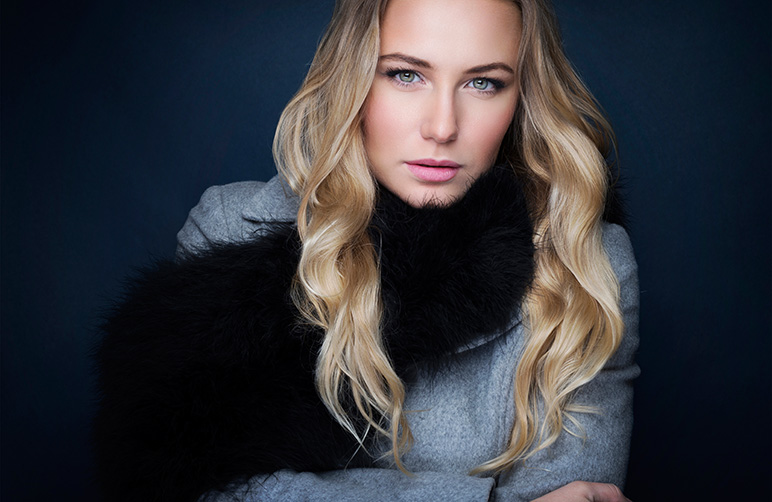Votre panier est vide.
Cleaning and Storage Tips for Fur Lovers
‘How do I care for my fur coat? How should I store it during the summer?’ These are two of the most asked questions we get from customers and we are happy to help. After all, one of the best reasons to buy real fur is that it can last decades and like wine, even get better with age! So, without delay, let’s get into some of the key tips and tricks for caring for your fur!
Fur Care 101
Nothing can beat proper maintenance of your fur garment. As an organic material, it needs the right care to look as amazing as the day you took it off the rack. So, how do you make sure you’re taking proper care of it? Here are some of the basics:
- Avoid using chemicals (oils, hair sprays, perfumes) of any kind – a bad odor can be much harder to remove than a stain and can damage your clothing by drying it out
- If your fur gets a little wet by rain or snow, shake it out as much as possible and then hang it in a well-ventilated area. Never use a hair dryer or heat source! That can damage both the fur and the lining
- If your fur gets really wet, take it to a professional furrier for care as soon as you can – do not go to a dry cleaner as they likely won’t have the special equipment needed to care for your garment
- Do not leave jewelry attached to your fur – this can mat your fur
- Wearing a scarf is a great idea if you expect to be very warm. The scarf can absorb body oils that could cause damage
Finally, it is strongly recommended to get your fur cleaned once a year by a professional. A sophisticated item requires a sophisticated touch, after all.
Storing your Fur
Food storage is just as important as fur care – this includes your regular everyday storage and long-term storing, which is usually the summer when it’s just too warm outside.
Everyday Fur Storage
There are 4 key factors to proper fur storage: equipment, temperature, humidity, and light. Here are the tricks to master each:
- Equipment: Always use a strong, broad coat hanger – this is super important as it will keep the shape of your fur coat. After all, your coat was meant to rest on your shoulders, so it only makes sense that gets the closest possible thing when you’re not wearing it!
- Equipment: don’t use a garment bag, especially a plastic one – fur needs to breath and if it is left in a bag or is stuffed in a packed closet, it can dry out and lose it’s shape
- Temperature: 45-50°F (or 7-10°C) is the ideal range – a cool environment will prevent drying it out and speeding up the aging process. At home, a ground level closet near an air conditioner is great
- Humidity: 50% is the magic number – you might want to store your fur in the basement since it’s cool there, but unless you run a dehumidifier, the air in the basement is often too moist
- Light: the darker the better! Direct sunlight and the heat from the sun is not good for fur, so closet storage is definitely the best way for storage
In general, proper home care will go a long way to keeping your fur looking it’s best throughout the season, but what about times you don’t plan on wearing it for months on end? Let’s take a look at seasonal storage next.
Longer-Term Fur Storage
Many of the same rules of home storing apply to long-term storage, like using a sturdy, broad coat hanger, not using a bag, and respecting the temperature, humidity, and light rules… but how do you do so? Let’s take a look:
- Professional storage: only a furrier has the right equipment and conditions to care for your fur for long periods. After all, this is one of their biggest jobs! When shopping for a professional furrier to keep your garments safe, make sure to ask them about the 4 key factors we just spoke about. This should be no issue for them!
- At home storage: do not use a cedar closet – cedar closets lock in moisture and, as we now know, humidity is not good for your fur (not to mention the odor!)
- At home storage: watch for mothballs or insects – moth balls provide the same problems as cedar closets while some insects can actively damage your fur, forcing you to make expensive repairs later. Not fun!
Longer-Term Fur Storage
A fur coat or garment of any kind is not your everyday clothing purchase – it is an investment in a high-quality product that deserves proper care. If you’re unlucky enough to have it suffer some damage, take it to a professional furrier as soon as possible. They are trained in analyzing the seams, linings, and fastenings on the outside and inside, and are best equipped to repair these and remove stains.
With a little TLC you’ll be able to keep your fur (and you!) looking its best for many, many years. If you have any other tips on fur care and storage, feel free to leave them in the comments! Who knows what more we might all learn? 🙂

 English
English

